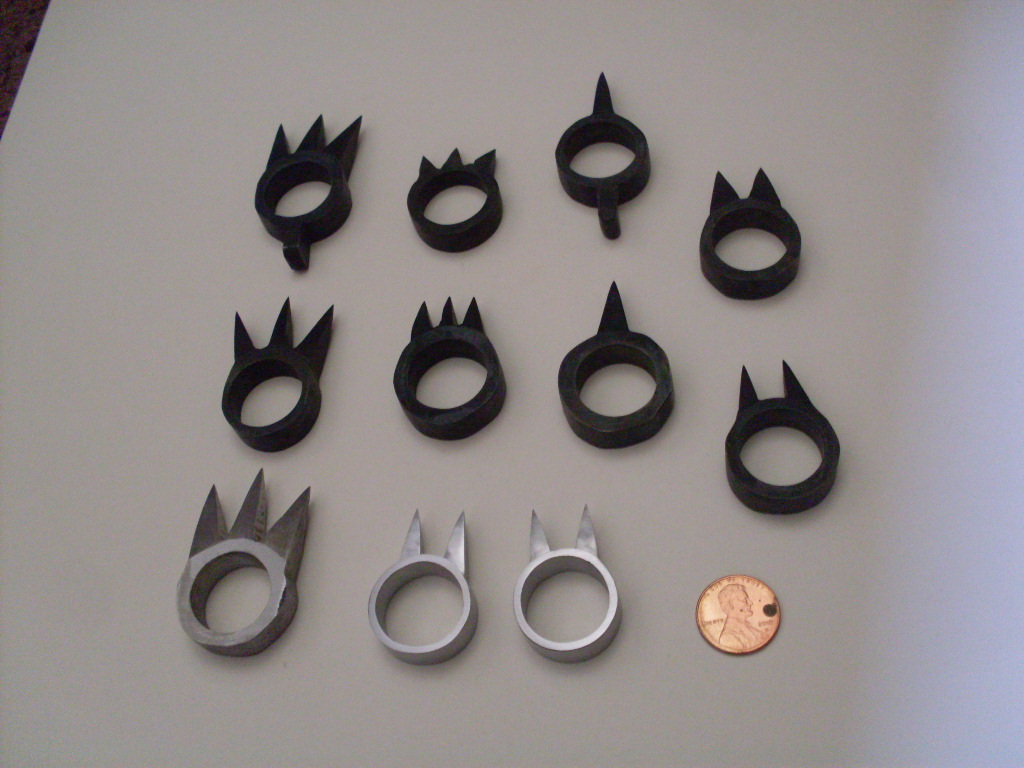Kakute on:
[Wikipedia]
[Google]
[Amazon]
 Kakute are rings made from iron or steel that were sometimes worn by the
Kakute are rings made from iron or steel that were sometimes worn by the
 Kakute are rings made from iron or steel that were sometimes worn by the
Kakute are rings made from iron or steel that were sometimes worn by the ninja
A , or was a spy and infiltrator in pre-modern Japan. The functions of a ninja included siege and infiltration, ambush, reconnaissance, espionage, deception, and later bodyguarding.Kawakami, pp. 21–22 Antecedents may have existed as ear ...
, and were favored by the kunoichi
is a Japanese term for . In popular culture, it is often used for female ninja or practitioner of ninjutsu (''ninpo''). The term was largely popularized by novelist Futaro Yamada in his novel in 1964.
Although kunoichi have appeared in numerou ...
, having one to four metal spikes protruding from it. The spikes were sometimes dipped in poison
A poison is any chemical substance that is harmful or lethal to living organisms. The term is used in a wide range of scientific fields and industries, where it is often specifically defined. It may also be applied colloquially or figurati ...
. Kakute were usually worn on the middle finger with the spikes hidden inside the hand, and then used to attack when the enemy least expected. The spikes were also excellent for holding onto an opponent, striking across the face, choking, and sometimes climbing as well. Some kakute had a tab with a hole, that was used for hojojutsu techniques. In this sense, the hojo (rope) could not be easily pulled away from the hands of the ninja or kunoichi, since it was tied to the kakute ring on their finger.''Meifu Shinkage Ryu Kakushi-buki Jutsu Nyumon'', pp. 22, 236-253.
See also
*Bagh nakh
The bagh nakh, vagh nakh, or vagh nakhya (, , , , lit. tiger claw) is a fist-load, claw-like dagger, originating from the Indian subcontinent, designed to fit over the knuckles or be concealed under and against the palm. It consists of four or five ...
References
Ninjutsu artefacts Rings (jewellery) Weapons of Japan {{japan-culture-stub